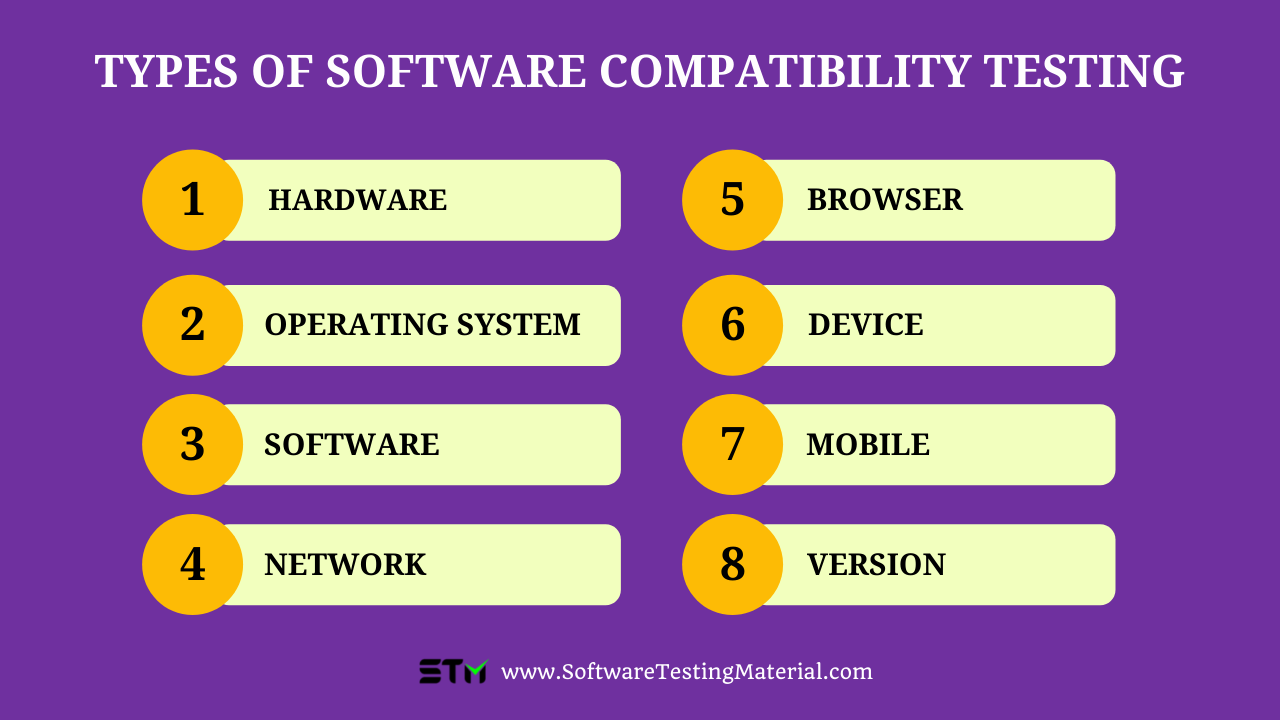What is Compatibility tests and how are they performed?
Compatibility Testing
Software compatibility can refer to the capacity of two systems to work together without making any changes to support each other. Software Compatibility is the interoperability between any two software applications.
Example: We can open files created from Wordpad using a Notepad too. So the file is compatible.
In a compatibility test, we check whether the application, website or system under test is compatible with different environments like web browsers, hardware platforms, databases, operating systems, networks, mobile devices, different versions, configurations, screen resolutions etc.
Compatibility testing helps us develop software applications with the ability to work seamlessly across various platforms and hardware without any issues. We can understand the behavior of the application in different environments and uncover hidden bugs in other interfaces.
Some examples of applications that we can access through both mobile and PC with native applications and websites are Amazon, Flipkart, Myntra, Facebook, YouTube, LinkedIn etc.
Why Compatibility Testing is Important
Making an application successful in the market is different from developing a good application. Users access the application on different devices. When launched to the market, it should be easy to adopt by all the users.
We have to make sure that our software is compatible with the user’s device and configuration. Stable software with good quality and performance will help the user to trust the software and use it all the time.
Compatibility testing is crucial in today’s market because of the diverse platforms and hardware used by the customers.
How To Perform Compatibility Testing
Compatibility Testing can be long and tedious as it involves several platforms and devices. We can divide the whole process into four steps for making it quick and efficient.
Step #1: Design and Configure Test Cases.
In this step, we design test cases that would analyse the behaviour of our application in different hardware, software, OS platforms, browsers, and other environments.
Step #2: Environment Set up
In this step, we gather all the required equipment and resources to perform our testing. Set the required version in the devices and upload the test build (test version of the application) in each environment.
Step #3: Execution
After the environment setup, we can start our execution. We can use the test cases as our guidelines and perform testing on all the devices. Make sure that you record the results and if any bug is found report it to the developers.
Step #4: Validation and Retesting
Compatibility Testing Checklist
- Check whether the CSS & HTML are correct.
- Check whether the SSL certificates are appropriate for the respective browser.
- Check the webpage & client-sided forms and fields with and without JavaScript.
- Check whether the DOCTYPE for every webpage is correct.
- Check whether the layout is consistent across various screens and resolutions.
- Check the font attributes such as size, colour and format are consistent across various platforms.
- Check the alignment of the content in the application across various screens.
- Check whether images, audio, video or other multimedia in the application is supported.
- Check the navigation within the application is consistent.
- Check the functionality of the software is working as expected.


Comments
Post a Comment